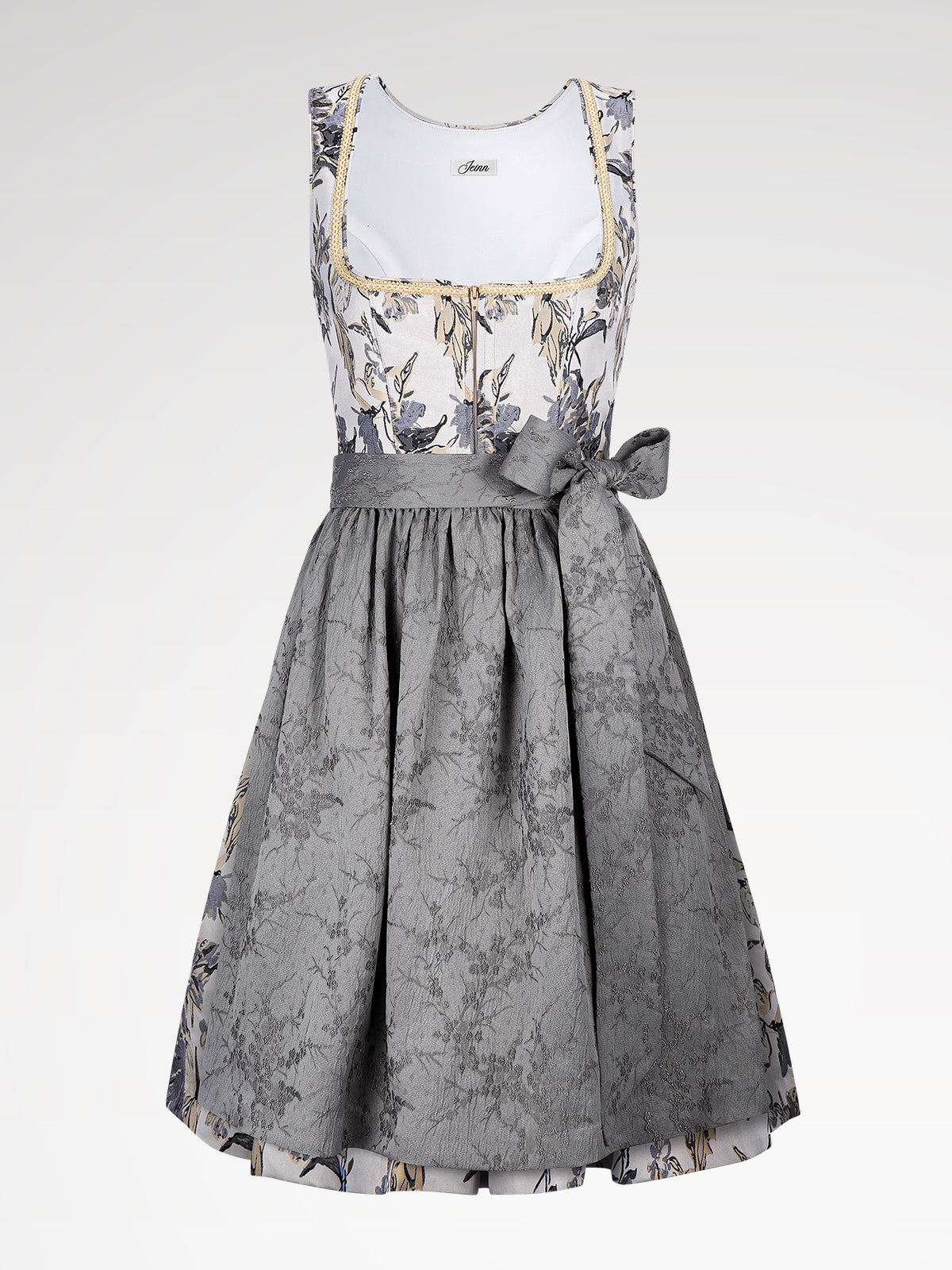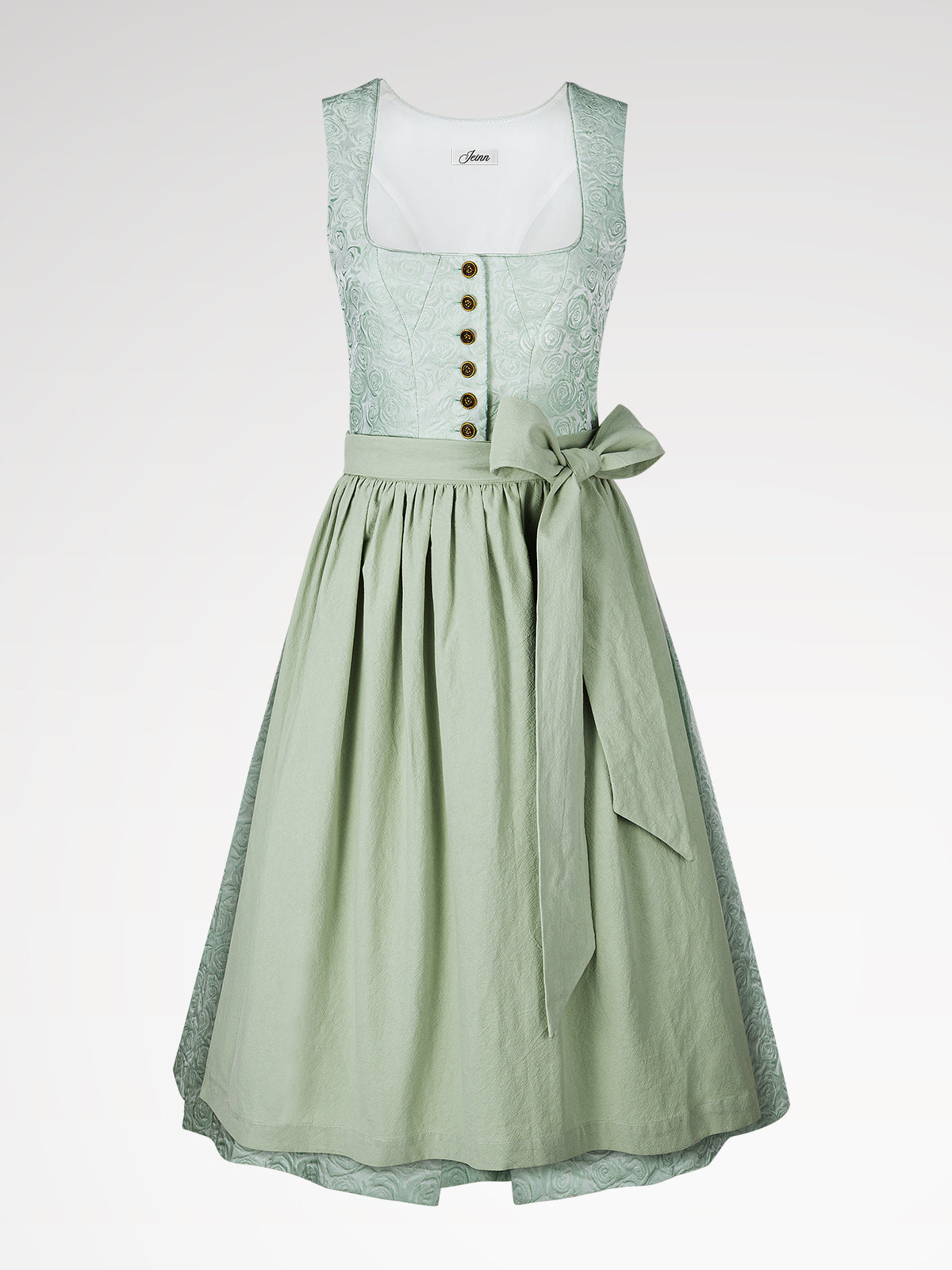14th century: The rural roots in the Alpine region
The origins of the Dirndl date back to the 14th century, when Bavarian and Austrian peasant women developed practical clothing for the hard work in the Alps. Dirndl black blouseMade of coarse linen or wool, it not only served to protect against the cold but also symbolized the social status of the farmworkers. The tight fit of the blouse, combined with a wide skirt, allowed freedom of movement during haymaking or sheep herding.
Historical depictions show that these early dirndls were often in dark tones such as black or dark gray—a color choice that was both practical (to conceal dirt) and cultural (as a symbol of mourning). The black dirndl blouse was characterized by wide straps and ruffles at the neckline, elements that can still be seen in modern versions today.
2 19th century: Noble refinement and Prussian influence
With the rise of the bourgeoisie and the Romantic era in the 19th century, dirndls underwent a radical transformation. Nobles and artists adopted rural motifs to create a more "idealized" version of country life. The black dirndl was now made of finer fabrics such as silk or velvet, decorated with lace and embroidery. The blouse featured a high waist and subtle ruffles, while the skirt fell in graceful folds—a homage to court fashion, but with a conscious reference to folk culture.
Prussian court ladies adapted the dirndl for formal occasions, combining it with fur stoles and jeweled belts. This "adaptation of the folk costume" served not only as a form of representation but also as a political symbol: the combination of rural simplicity and aristocratic elegance was intended to visualize the unity of the empire.
3 After 1945: Commercialization and tourism boom
World War II marked a turning point. The postwar period brought economic hardship and mass tourism, which redefined the dirndl. Dirndl-black blouses were mass-produced to serve as souvenirs for foreign visitors. Munich and neighboring Nymphenburg developed into centers of dirndl production, with costumes offered in standardized sizes and colors—often with reduced embellishments to save costs.
The 1950 Oktoberfest, held for the first time after the war, established the dirndl as an integral part of Bavarian identity. Breweries and festival tents used the costumes as a marketing tool, while local seamstresses learned to make quick, robust versions in workshops. Black dirndl blouse It acquired a new function: it became a symbol of “love of homeland” in a time of reconstruction.
4 21st Century: Punk, Bohemian and High Fashion
Modern designers like Lena Hoschek and Monique Lhuillier revolutionized the dirndl by combining traditional cuts with urban trends. Today, black dirndl blouses are combined with leather trim, zippers, or asymmetrical cuts – a homage to punk and bohemian culture. At the same time, artists are experimenting with sustainable materials like organic cotton or recycled metals to position the dirndl as a statement against fast fashion.
At fashion shows, dirndls appear in metallic colors or with digitally printed motifs, while start-ups like Traditional costume workshop Create online platforms to enable individual customization (z.B. tailor-made Black dirndl) to offer.This evolution reflects how traditional clothing remains relevant in a globalized world – through hybridity and cultural hybridity.
5 Appendix: Treasures of the Deutsches Museum Munich
The Deutsches Museum presents key pieces on the history of the dirndl in the “Trachtenkabinett” (Traditional Costume Cabinet):
- 16th century dirndl black blouse made of linen with hand-embroidered Appenzell patterns.
- 1920s dirndl in silk, decorated with pearls and silver threads – a relic of the Golden Twenties.
- Modern installation made of recycled PET bottles that visualizes the sustainability debate.
These exhibits show how the dirndl always reflects social upheavals – from the feudal system to digitalization.





Leave a comment
This site is protected by hCaptcha and the hCaptcha Privacy Policy and Terms of Service apply.